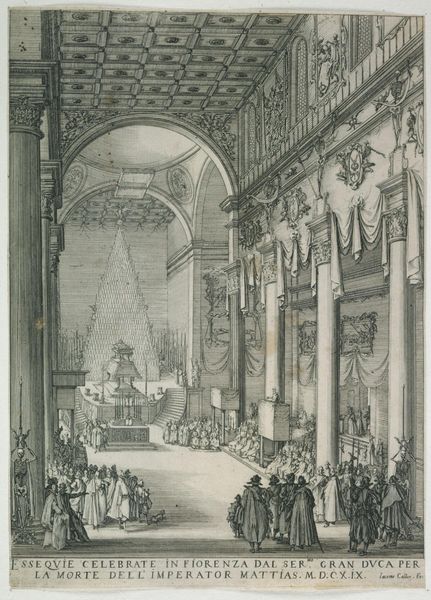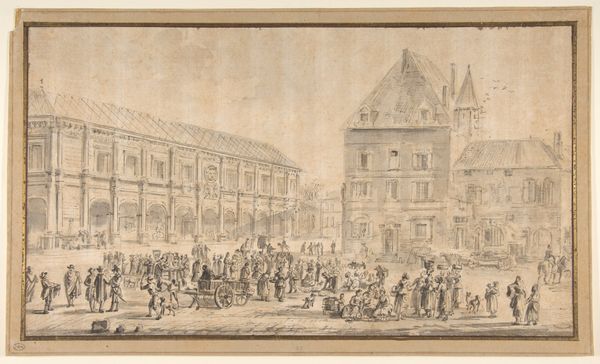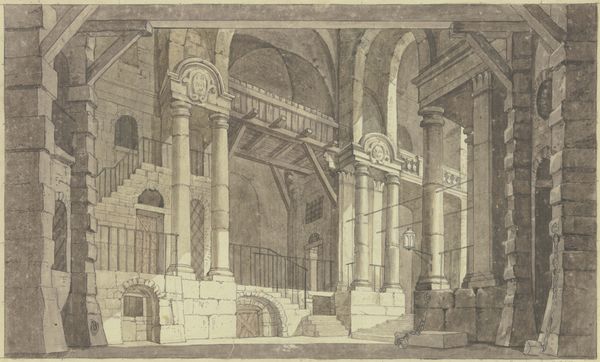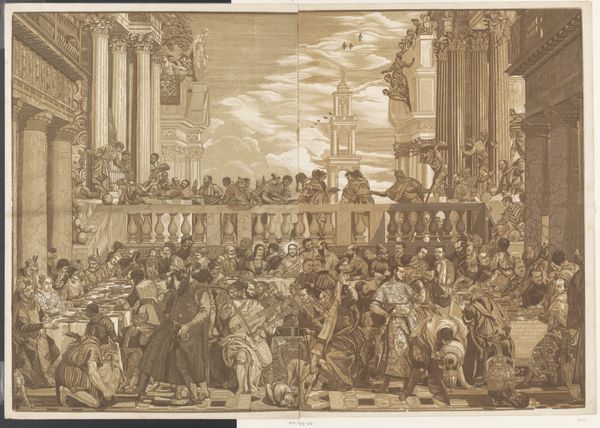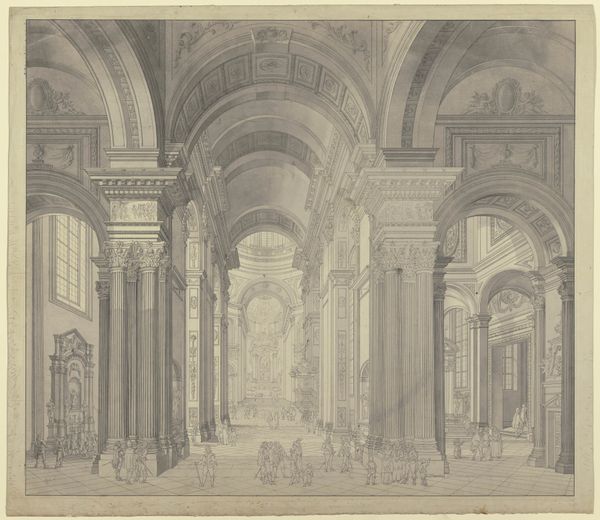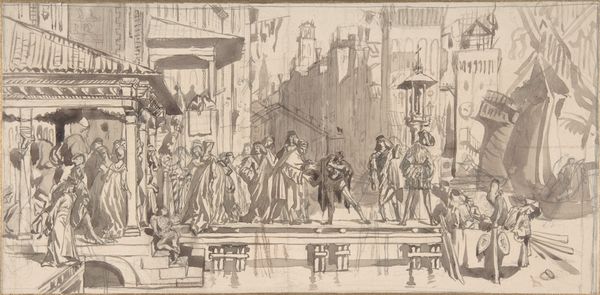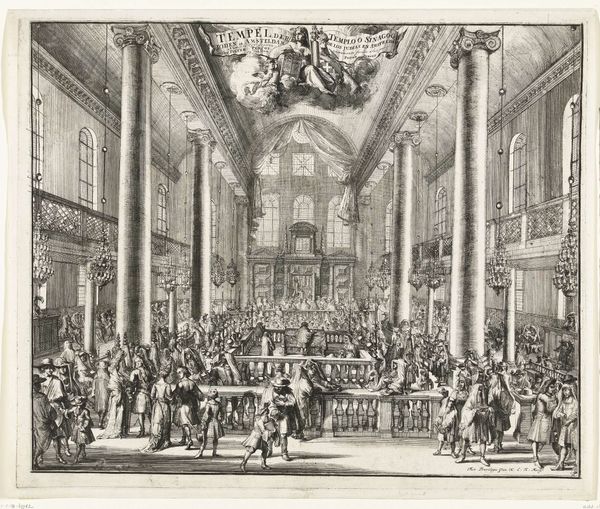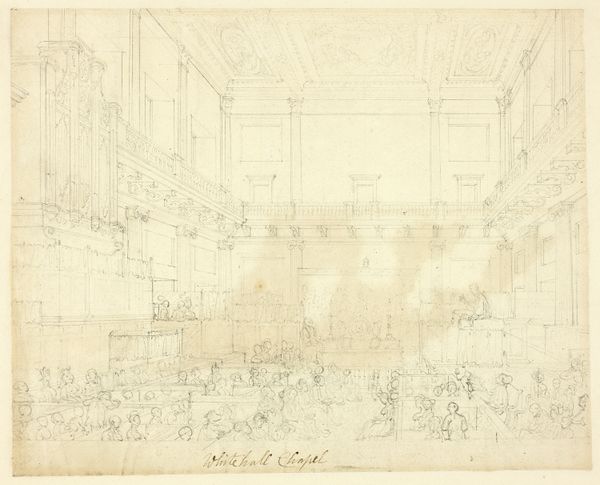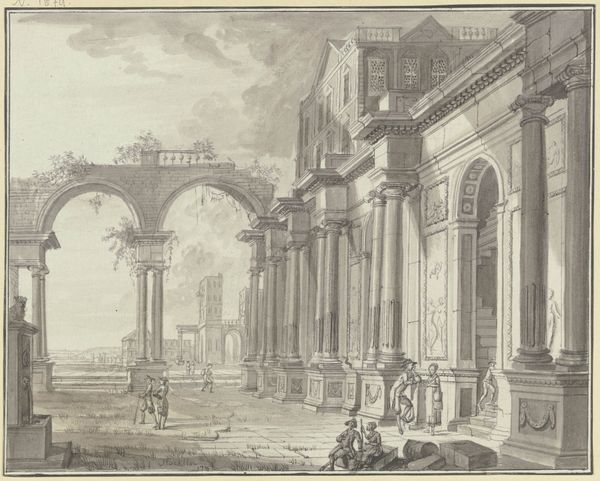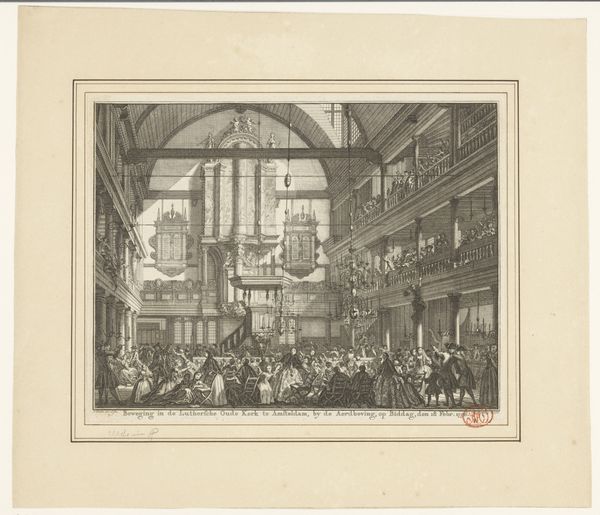
Réception des chevaliers de l'Ordre du St. Esprit dans la Chapelle de Versailles lors de la Grande Promotion du 3 Juin 1724 1724 - 1754
0:00
0:00
drawing, paper, ink
#
drawing
#
narrative-art
#
baroque
#
perspective
#
figuration
#
paper
#
ink
#
line
#
cityscape
#
genre-painting
#
history-painting
#
academic-art
Copyright: Public Domain
Editor: Here we have Jacques Rigaud's "Reception of the Knights of the Order of the Holy Spirit in the Chapel of Versailles during the Great Promotion of June 3, 1724," created sometime between 1724 and 1754 using ink on paper. It's incredibly detailed. I’m struck by how the artist captures such a grand, theatrical space. What symbolic meaning might you find embedded within it? Curator: It's the staging of power, isn't it? Consider how the architectural setting—the chapel itself—becomes a vessel, laden with the symbolic weight of the French monarchy and divine right. And above, that almost overwhelming presence of the divine, bearing down, almost legitimizing earthly power through heavenly decree. Editor: So, the symbols within reinforce the authority of the monarchy? Curator: Precisely. Think about the Order of the Holy Spirit itself. Its knights, participating in this ritual, become physical manifestations of power, linked to a spiritual lineage. Notice how Rigaud painstakingly renders their garments, each detail echoing inherited privilege and sacred mandate. The scene serves not only as a historical record but also as a powerful statement about societal order. Editor: And that very deliberate perspective? It guides our eyes right to the most important figures. Curator: Indeed, perspective becomes a tool, structuring how we, the viewers, are meant to perceive this power dynamic. Ask yourself: Who benefits from this visual organization, and whose story is being told—or, perhaps, omitted? Editor: I hadn't considered the perspective in that way. It really brings home the idea of constructed narratives. Curator: Exactly. These aren't just scenes, they're carefully constructed arguments, using imagery to shape belief and reinforce social hierarchies. Recognizing those embedded visual cues is key. Editor: I'll definitely look at art with a more critical eye now. Thanks!
Comments
No comments
Be the first to comment and join the conversation on the ultimate creative platform.



